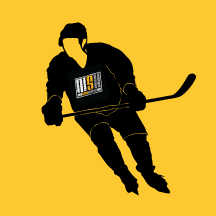Slate
Blackcurrant
Watermelon
Strawberry
Orange
Banana
Apple
Emerald
Chocolate
Marble
Slate
Blackcurrant
Watermelon
Strawberry
Orange
Banana
Apple
Emerald
Chocolate
Marble


Leif
Members+-
Content Count
682 -
Joined
-
Last visited
-
Days Won
5 -
Feedback
N/A
Content Type
Profiles
Forums
Downloads
Gallery
Store
MSH News and Articles
Everything posted by Leif
-
The EU price is about £600 whereas a new or nearly new 1650 (no foam) can be had for ~£200. I could take mine to training sessions and charge for sharpens, but it’s a heavy machine, and all too easy to drop and/or bang against something.
-
Is there any advantage to black steels if you do a one pass sharpen before every session? From what I have read, the key advantage is keeping an edge longer. Also does anyone know if any particular blades are more or less prone to being tapered? My previous Step Steel blades were tapered so usng a BAT gauge was a bit tough. My Bauer LS5 blades are not tapered. However a sample of one set of each does not tell me much.
-
6 clicks is quite a bit, I found the optical alignment tool got close (good enough to be honest) and 2 more clicks got it perfect according to my gauge. One pass is perhaps not enough as suggested.
-
I find the responses to smu odd. Self inflicted wounds? How so? Yes his posts could be very repetitive and they became boring, and uninformative, but he seems to have had an appalling time.
-
Last year I went from a Bauer 4500 to a Bauer Reakt 200. Whilst my views are subjective, and unscientific, I’m pretty damned sure that the 200 is far more protective. As an example I took a slap shot to the head, above the cage, and felt nothing. The helmet was able to absorb the impact and dissipate the force. I’ve hit the boards a couple weeks of times, and felt little. I’m sure the 4500 would not have absorbed the shock based on knocks I experienced when wearing it as the foam is pretty hard and dense. I don’t know if the 200 offers more protection from rapid deceleration were I to slam my head at high speed into the boards for example, but my experience is that it does offer significantly more protection against impacts. However, I suspect it does offer protection against deceleration, but only partially for obvious reasons. As for the suggestion that a poor helmet is best as it makes you more alert, I had a headache for several days when a big player going at high speed skated directly into me head on whilst I was nowhere near the puck, and not expecting to be floored. I recently went over when chasing someone with the puck, and he deliberately stopped in a brace for impact stance, not a lot I could do about that.
-
I used to sharpen one pair of skates every two weeks with a 50 mile round trip. It will pay back in 3-4 years. Throw in that I get sharp blades EVERY session, with perfect edges EVERY time, and no wasted mornings, and IMO it’s good value even at the sky high European price that we pay.
-
He certainly does sound like a good candidate. The issue of longevity is an interesting question. The Wissota and other manual sharpeners have AFAIK only one component that can go wrong in normal use namely the motor. The Sparx has I assume two motors (one to rotate the cutting wheel, one to drive the wheel horizontally) and an electronic module. I have electronic goods that have lasted decades without issue, and electric motors can last yonks, so in principle a unit that is not abused could last decades. It also has some electronic switches to detect when the door and latches are closed, and some lights which I assume are LEDs. An LED should out last the owner and switches should be durable. That said, my well cared for Nikon D200 failed after 8 years due to an electronic module blowing.
-
Seriously? That’s pretty much the default hollow for hockey skates in this country. Go to a LHS and ask for a sharpening, and you’ll get that or 5/8”, unless they are knowledgeable then they might match it to your weight. I know plenty of people on 3/8”, a few on 7/16” including me, lots on 1/2” and some on 5/8”. I’ve never met someone on shallower than 5/8”.
-
1/2” is not deep, but 3/8” is deep in my view. Curious about the edges. One person I know does a manual sharpen that grips more than sharpens of the same depth from elsewhere. Quite why I know not. The 7/16” on my Sparx is similar to that from my LHS. Is there perhaps a difference in technique between sharpeners, assuming correct alignment of the blade relative to the wheel?
-
I’m surprised people go from 1/2” to 3/8”, that’s a big change. Good point about the ice, a few months back I tried 7/16” as a 1/2” grind meant my blades were slipping sideways on the hard winter ice, and I much prefer it. A year back I accidentally tried 7/16” and couldn’t handle it, I think my skating technique was not up to using it then. It might be that you are not getting a true 1/2” but a bit deeper when you get them done by hand, perhaps due to the way they dress the stone. In my case the Sparx 7/16” compares with a manual sharpen, in fact the last manual sharpen felt a bit dull so maybe it was actually 1/2”.
-
Having owned this unit for two weeks, I can say that it is incredible. Being able to do one cycle before every skate means that I have sharp edges, and I really notice it on the ice, I get a better grip and control. And I don't have to worry about dinging an edge on exposed concrete in the rink, as I can touch it up at home. Has anyone changed their radius of hollow as a result of using a Sparx? I do wonder if I could go to a 1/2" from the 7/16" I currently use. Also, does anyone use different hollows for hockey and public skating? My hockey gear weighs a tonne, which means much more grip with a given hollow, so I could go to a shallower hollow for hockey sessions.
-
FWIW I have Bauer Custom skates and I get some soreness on the outside toes on my right foot. Oddly enough the boot seems to mould itself to my foot while skating and after 30 minutes or so the rubbing goes, and the fit is perfect. However, we don't know how the CCM and Bauer processed compare. (You would hope that both are first rate.)
-
It sounds like Scott started out making very small numbers of custom speed skates, and then scaled up the process, whereas Bauer and CCM have decades of experience making large numbers of skates, including custom, and they have methods to do a good job AND make it look good. Perhaps as you say making them look the mutts would add significant cost.
-
Be warned that customs tend to fit much closer, so there will be less room for you to add your own padding. Obviously you might be able to get the skate maker to add padding when they make the skate, but I suspect they only do that in the ankle areas. It is of course possible that the better fit will obviate the need for extra padding, but I'm guessing. I have Bauer Customs and I don't think I could insert padding anywhere, they are a tight fit.
-
Yes you are obviously right that taste is subjective, that said we really do completely disagree, I find the Supreme 2s Pro understated, just a few touches of yellow on black. The True skate has those ugly blingy stripes on the side. 🙂 But honestly, at the end of the day as long as they are not flourescent pink, with lime green laces ... it’s the function that counts. Cosmetic and aesthetic overlap. It is cosmetic in that it affects the surface, and maybe below too, and it is aesthetic as it makes it look poor. However, I will leave owners to give their feedback and views.
-
I don’t find CCM AS1 and Bauer 2s Pro garish, quite understated and tasteful actually. It is an aesthetic issue, and to me it suggests sloppiness, and makes me wonder how deep that sloppiness goes. My concerns could be completely unfounded, but IMO they should pay more attention to the first impressions. BTW Bauer Custom are handmade, and immaculately finished.
-
A full sharpen is four passes each way. A refresh is one pass each way. An owner can of course do as normal, one full pass every 10-20 hours, if they prefer. But why?
-
The U.K./European price is £572. I can get a 1650 for ~£200 without foam, Peli foam is ~£60.
-
Beaten to the post!
-
I think the Sparx case is a Pelican 1650 with custom foam. They look identical.
-
I agree, I was giving an example that showed that different blades burr differently. And I happened to do one pass today. Black steel has brittle edges due to high carbon content. Four passes doesn’t create huge burring on my blades. Of course if the edges are dinged, you’ll need four or more passes. Luckily mine weren’t. As an aside, a sharpener I know deburrs by pulling blades across a piece of soft wood. I tried that and it removed a bit of the sharpness or bite, definitely not something I will try again.
-
I have Bauer LS5 which is a black steel. I’ve just done one pass, with a 7/16” wheel, and the burrs were very fine, and easily brushed off with a finger. Proper black steel has very hard edges, which probably create fine burrs as the black coating is brittle. I might try one pass per two hours. I marked the edges with a sharpie before the cut, and all of the ink was removed.
-
Out on the ice today at 8:15am for and hour and a half of hockey with newly sharpened skates, apprehensive at first, but straight away it felt good, as good a sharpening as I’ve ever had, and I love freshly sharpened blades. The BAT gauge showed zero error. I’ll try two passes every 6-7 hours on ice, and see how it goes. I wonder what other people do in terms of number of passes, and how often. I used to get them sharpened every 16 hours or so.
-
I believe you’d get the same reading from your BAT gauge on both sides of the blade, but reversed of course, if the blade sides were parallel and flat.
-
This might be of interest: https://blogs.sparxhockey.com/uneven-edge-checker-reading
